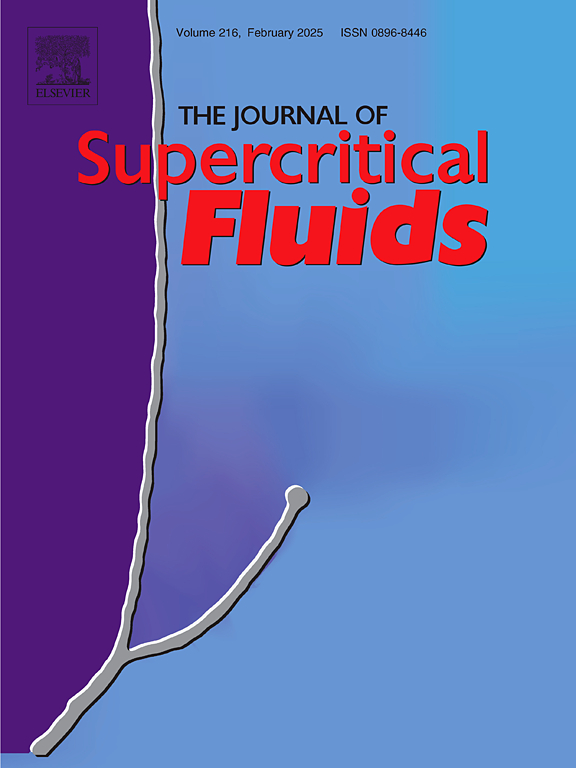Comprehensive performance assessment of the supercritical CO2 PCHEs with different compactness
IF 4.4
3区 工程技术
Q2 CHEMISTRY, PHYSICAL
引用次数: 0
Abstract
To enhance the compactness of supercritical CO2 Brayton cycle systems, this study proposes straight-type and asymmetric airfoil-type printed circuit heat exchangers with different compactness. Their thermal-hydraulic performance was numerically investigated and compared to a traditional straight-type exchanger with a compactness of 1250 m2/m3. Nusselt number and friction factor correlations were developed for Reynolds numbers between 4000 and 16000. Using these correlations, recuperators were designed and evaluated based on total cost. The results showed that under heating conditions, the asymmetric airfoil fin channel with a compactness of 5000 m2/m3 exhibits the best heat transfer performance, while the straight channel with a compactness of 2500 m2/m3 achieves optimal hydraulic performance. Increased compactness reduces recuperator volume but raises pressure drop. The straight channel with a compactness of 2500 m2/m3 achieves the lowest total cost, whereas the asymmetric airfoil fin channel with a compactness of 5000 m2/m3 results in the highest.
不同致密度超临界CO2 PCHEs的综合性能评价
为了提高超临界CO2布雷顿循环系统的紧凑性,本研究提出了不同紧凑性的直线型和非对称翼型印刷电路换热器。对其热压性能进行了数值研究,并与密实度为1250 m2/m3的传统直线型换热器进行了比较。在4000和16000之间建立了努塞尔数和摩擦因子的相关性。利用这些相关性,根据总成本对回热器进行了设计和评估。结果表明,在加热条件下,紧凑度为5000 m2/m3的非对称翼型翅片通道传热性能最佳,而紧凑度为2500 m2/m3的直线型通道水力性能最佳。紧凑性的增加减少了回热器的体积,但增加了压降。直线型通道的紧凑度为2500平方米/立方米,达到最低的总成本,而非对称翼型鳍通道的紧凑度为5000平方米/立方米,结果最高。
本文章由计算机程序翻译,如有差异,请以英文原文为准。
求助全文
约1分钟内获得全文
求助全文
来源期刊

Journal of Supercritical Fluids
工程技术-工程:化工
CiteScore
7.60
自引率
10.30%
发文量
236
审稿时长
56 days
期刊介绍:
The Journal of Supercritical Fluids is an international journal devoted to the fundamental and applied aspects of supercritical fluids and processes. Its aim is to provide a focused platform for academic and industrial researchers to report their findings and to have ready access to the advances in this rapidly growing field. Its coverage is multidisciplinary and includes both basic and applied topics.
Thermodynamics and phase equilibria, reaction kinetics and rate processes, thermal and transport properties, and all topics related to processing such as separations (extraction, fractionation, purification, chromatography) nucleation and impregnation are within the scope. Accounts of specific engineering applications such as those encountered in food, fuel, natural products, minerals, pharmaceuticals and polymer industries are included. Topics related to high pressure equipment design, analytical techniques, sensors, and process control methodologies are also within the scope of the journal.
 求助内容:
求助内容: 应助结果提醒方式:
应助结果提醒方式:


